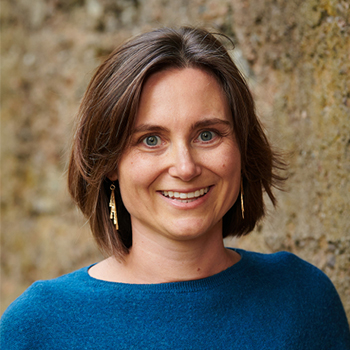Babyloss, my grief-mamas often say, is like a lightning strike from a clear blue sky. One minute, you’re happily pregnant making announcements, cutting into pink or blue cakes, posing for belly-pics, and painting a nursery, the next: BOOM. You are figuring out how to get your baby’s body out of the hospital refrigerator and into a funeral home. This bolt of lightning cleaves the maternal life right down the middle leaving before and after. Any pregnancy that falls into the aftermath we call a subsequent pregnancy (subpreg for short).
My very first pregnancy loss was a blighted ovum: a sort of phantom-pregnancy, all placenta, no baby. I should have miscarried but didn’t. I needed a D&C, a surgical emptying of the uterus: an abortion minus cultural shame. It wasn’t really a D&C (dilation and curettage) which involves the manual scraping of the uterine lining with a little spoon-like tool. It was a D&E (dilation and evacuation) which uses suction to clear the lining of the uterus. The doctors just talk about it using the old-fashioned protocol (D&C). I don’t think they do it out of malice, but the only reason I find to distinguish between true D&E and encoded D&E is to sort the patients and their procedures by shame status. (If you know a truer reason than this, I would really be interested to learn it!)
In any case, I had a “D&C” which was actually a D&E at 13 weeks gestation.
Each pregnancy thereafter could be classified as a subpreg. Because I had more miscarriages, each subsequent-subpreg was more fraught than the last until finally: BOOM. My world was cleaved right down the middle by Laurel and the shamiest of all shameful D&Es. (Which was actually an L&D — labor and delivery, but who’s counting?)
“I believe,” Dr. Hern told me, “that you need at least 6 months to a year to heal from this emotionally and physically before another pregnancy.”
Nine months post-Laurel, we felt ready to try again. I got pregnant immediately. For so many people who love me, this was a triumphant moment. The further my pregnancy progressed, the happier they felt.
I never felt happier. As in: time progressed, my baby grew in me, but happiness never did. The further I got, the more shellshocked I felt and the further I drifted outside of my body. I envied Sleeping Beauty who slept through all 9 months of her pregnancy in a coma, only to wake to her suckling babes. Every single week of Lucia’s pregnancy marked a gestational anniversary of Laurel’s pregnancy. Laurel wasn’t diagnosed until 35 weeks, birthed at 36. How was I supposed to rest in trust and joy when my body was reliving that slow roll towards calamity?
Trauma lives in the body. As someone with PTSD, I don’t use the word “trigger” lightly. A trigger isn’t something I find upsetting. A trigger pulls my nervous system back in the moment of trauma. I know that the obstetric exam room was a trigger because my resting heart-rate there was 138 beats per minute. I know my ultrasound was a trigger because I got stuck in the past for the rest of the day after my elated obstetrician graduated me from high-risk care. Just being inside my pregnant body was triggering in a hundred different ways. My therapist, kind and lovely as she was, was zero help. I did not need to talk about it. I needed relief. I found a trauma therapist. At the time, CBT (cognitive behavioral therapy) was the most recommended modality for PTSD (it isn’t anymore, but it’s still a hell of a lot better than just talking about the traumatic past). My trauma therapist specialized in combat veterans. When I told him my story, he leaned in close and observed: “Getting pregnant again is like coming home from war, turning around, and getting right back on the plane to Nam. You’re back in the jungle.”
Many women in subpreg believe that their fear will somehow harm their developing baby. “Think positive!” people say. “Your thoughts become reality!” What an ineffective way to cheer a traumatized pregnant woman. Even Gabor Mate of The Body Says No (a book that argues for the body-mind connection and ill health implications of trauma and repression) will tell you that it isn’t feeling fear or shame that builds harm in the body: it’s repressing tough feelings that puts issues in the tissues. Laurel’s brain didn’t form wrong because of my stress in pregnancy. Nobody knows why her brain formed the way it did. Bad things just happen sometimes, and that time, they happened to Laurel.
As with so many pregnancies carried under duress, Lucia formed healthy inside my flashback-womb. Babies build themselves with the pieces mothers provide. She built herself well. And in a way, I did wake up when at the very first she crawled up my body to suckle at my breast. We were lucky. We bonded well from her very first breath.
It’s not that my family is “complete.” I’m just done. It’s a kindness to myself to stop here. Sometimes I feel an absence, of Laurel and kids who never were. The absence is a part of my family, too. It’s allowed.
I see a many clients through sub-pregnancy. Somatic modalities like my coaching work are extremely supportive. It’s one thing to cognitively decide that feelings are allowed, it’s another thing to make room for fear and anguish in the pregnant body. It feels good to guide women through their jungles. I won’t return to mine.
If you’re pregnant after loss, or thinking about trying to conceive, allow fear, sadness, anger. Honor hopelessness when it arises. Go gently on yourself and allow your feelings to be exactly as they are. Notice how, when you make space for feelings, they tend to move and change. Feelings aren’t here to be judged. They’re here to be felt. That’s all. You can do it. Somatic work helps, too. Gentle yoga counts. If you’d like to go the therapy route, EMDR is currently the most recommended modality of psychological treatment for PTSD. There are many more modalities discussed at length in Bessel van der Klok’s The Body Keeps The Score: Part V: Paths to Recovery.
If you’re supporting a friend or loved one who is pregnant after loss, it’s a beautiful thing to hold joy for her. Tend to your own hope and honor her feelings exactly as they are. She might want a traditional celebration like a baby shower, or she might not. She might prefer a more intimate ceremony. She might prefer to pretend she’s not pregnant at all and accept no gifts until baby is Earth-side. It’s ok to ask. Remind her that she is exactly where she needs to be today to have a healthy baby in the future, and that it’s ok to survive these moments one at a time. String enough milliseconds together and soon enough she’ll be somewhere else. And if you feel that she needs more help than she’s getting, do some research and make her a list of relevant resources: EMDR, neuro-feedback, somatic coaching, local or online support groups. Offer to call when she has an appointment or to go with her if her partner can’t. Send her a note of love. There are so many beautiful ways to show up.

